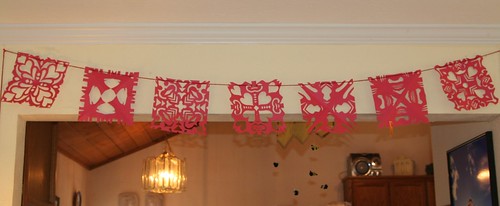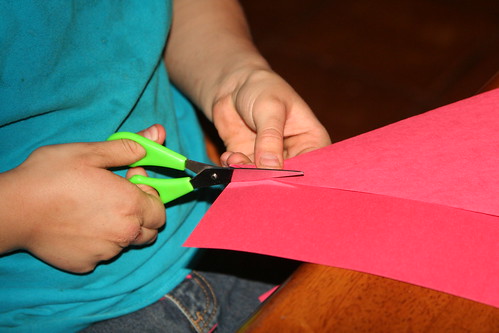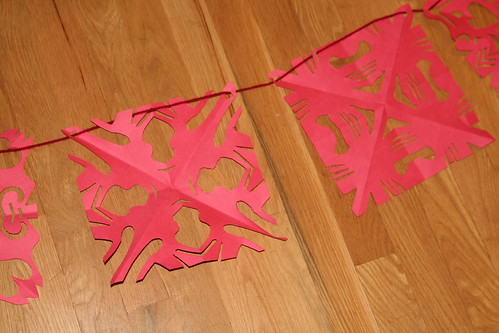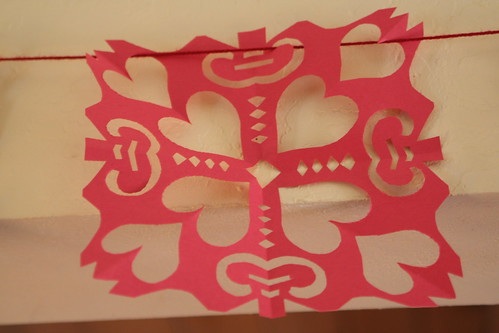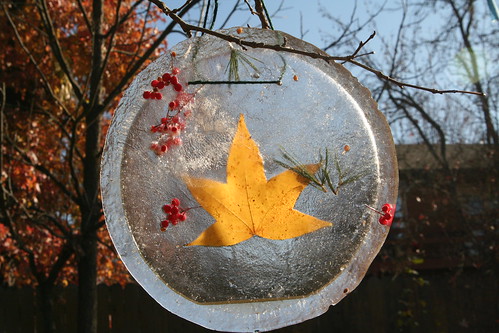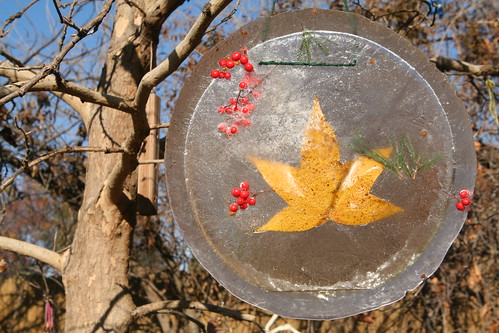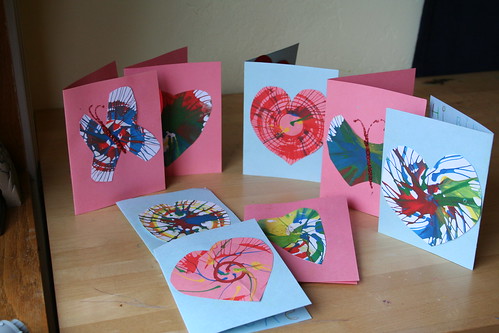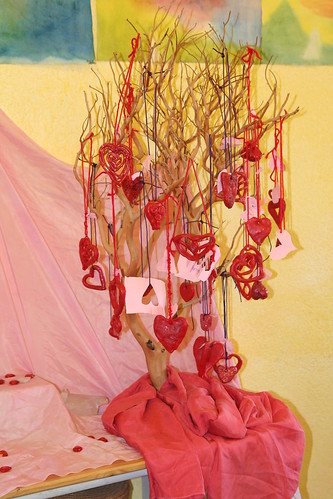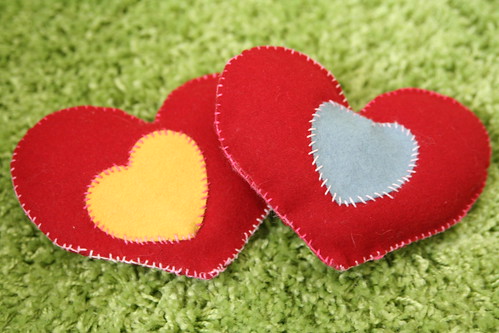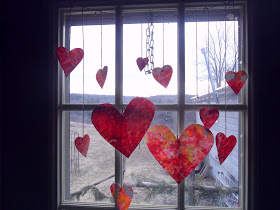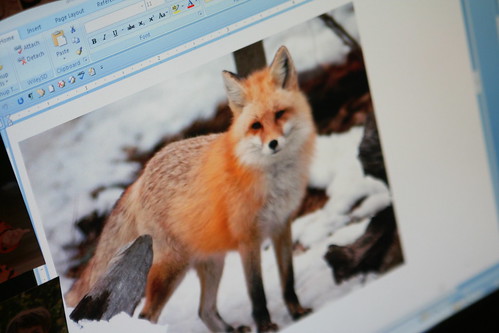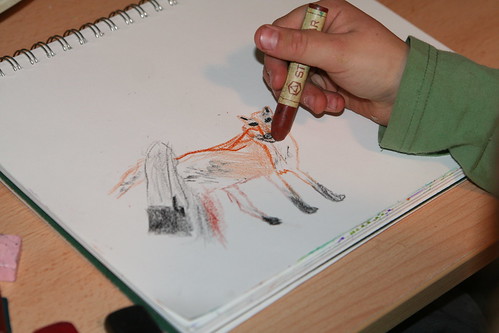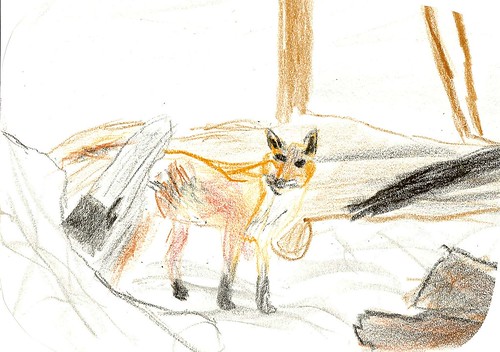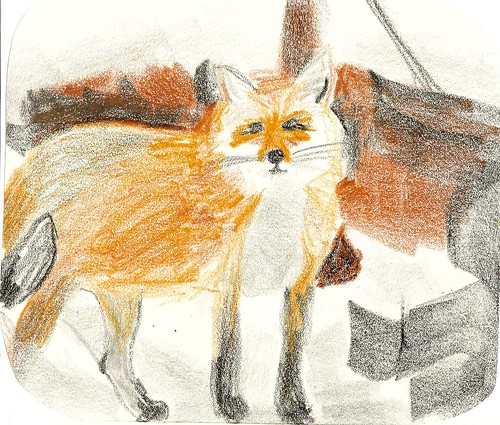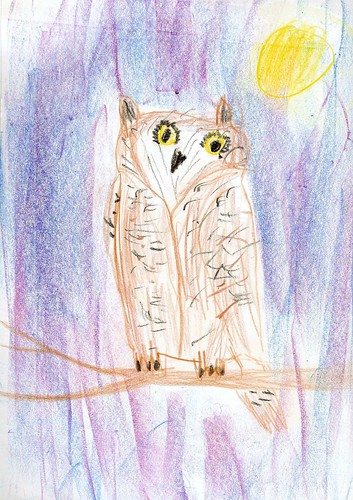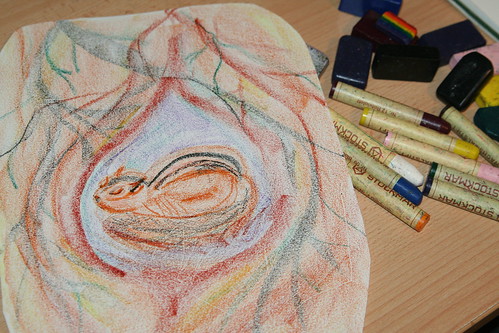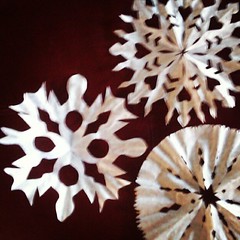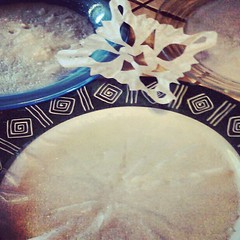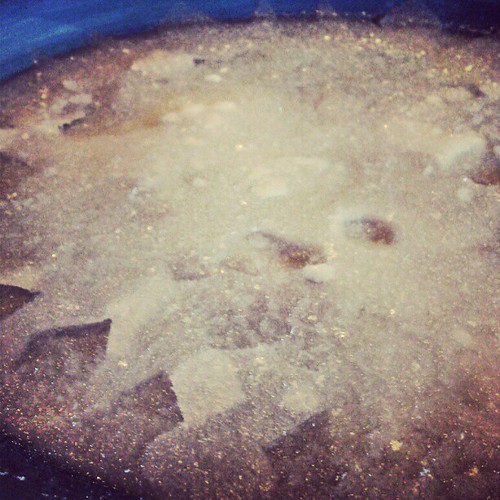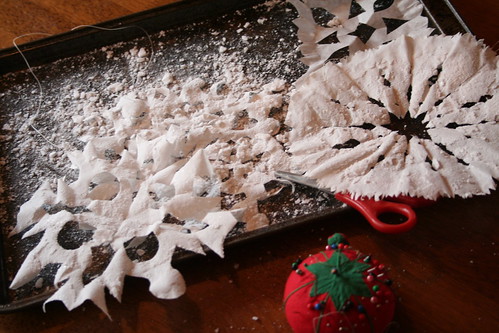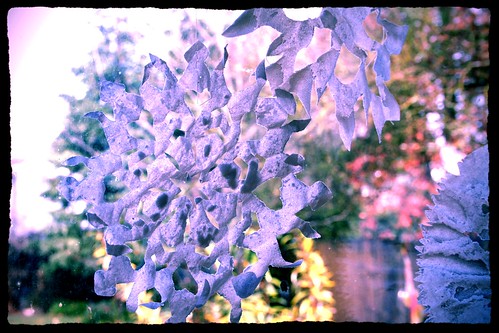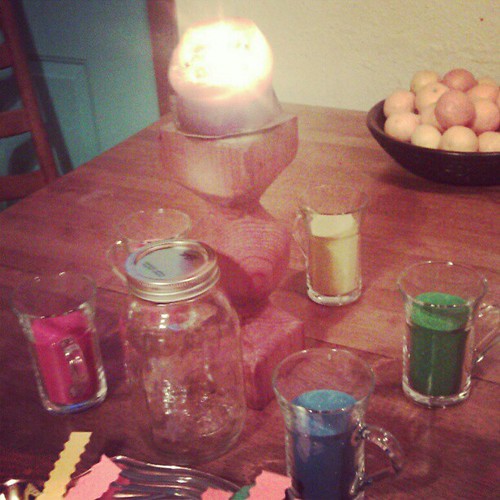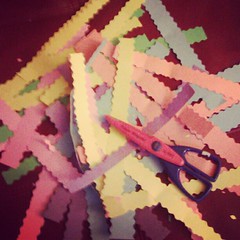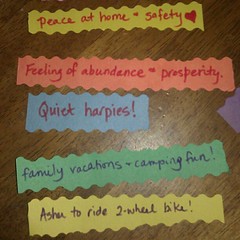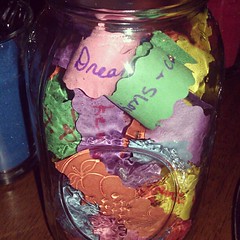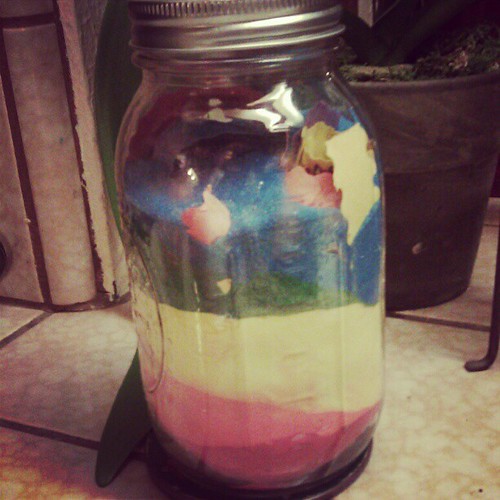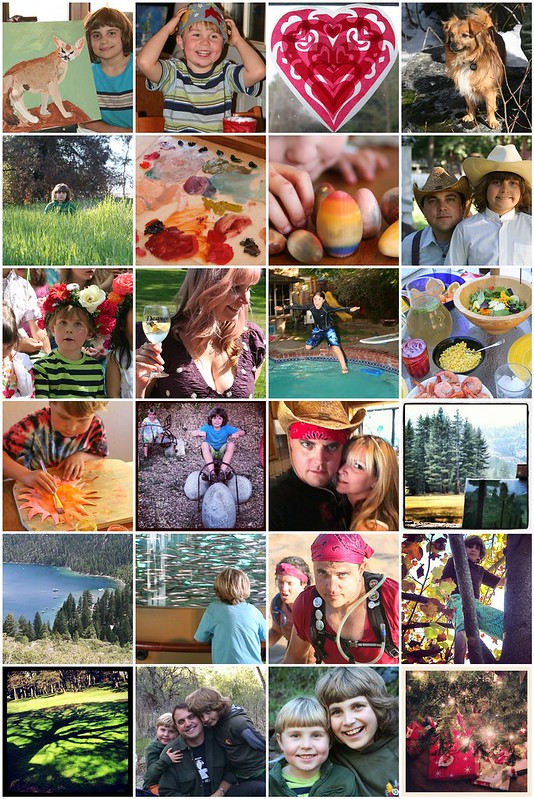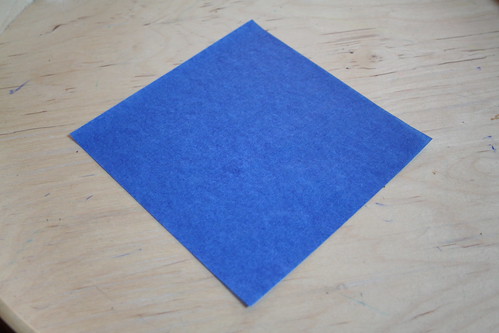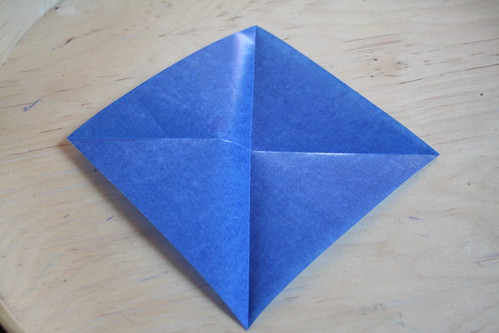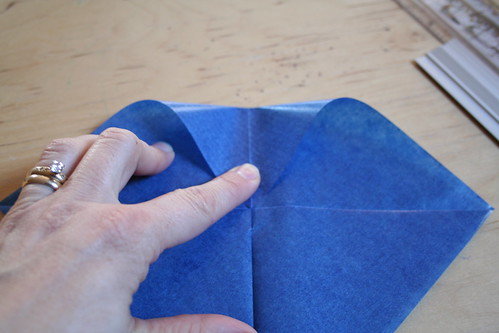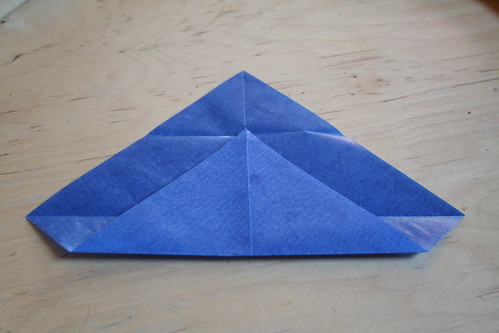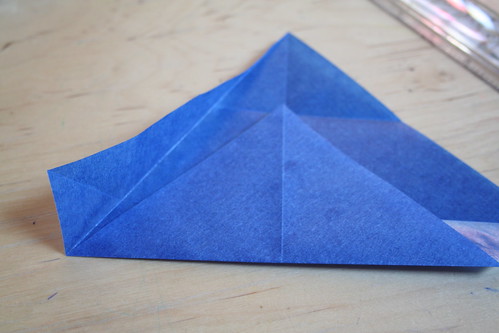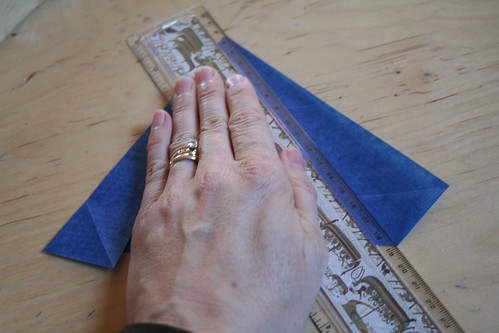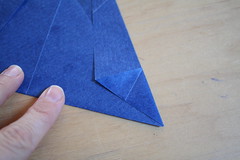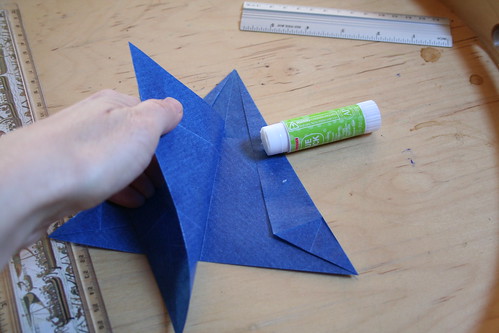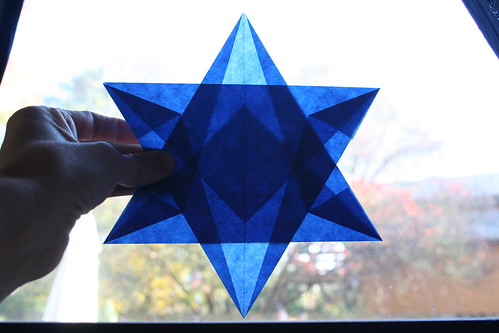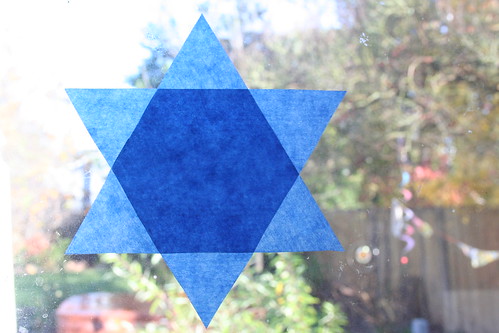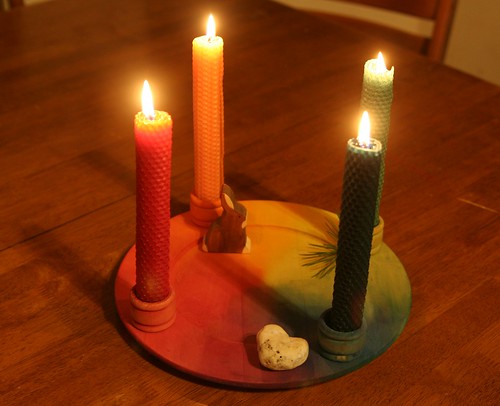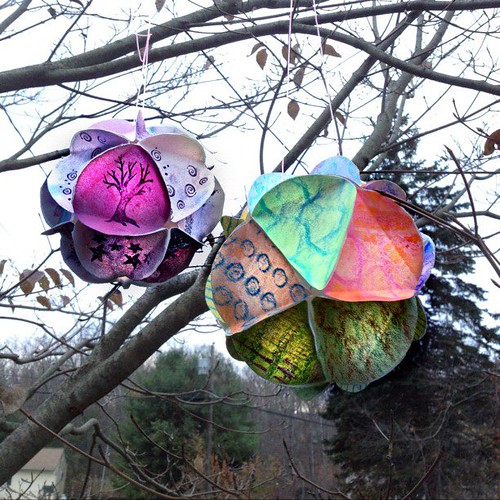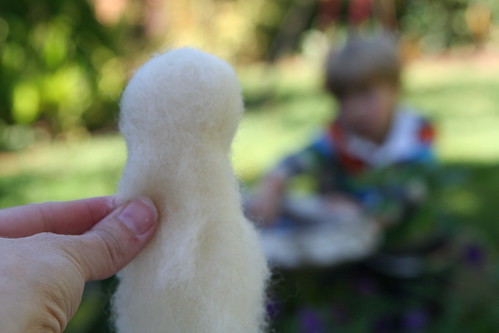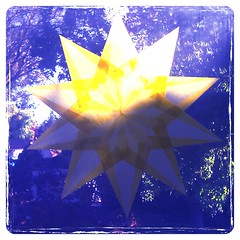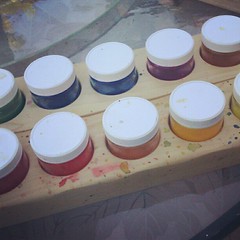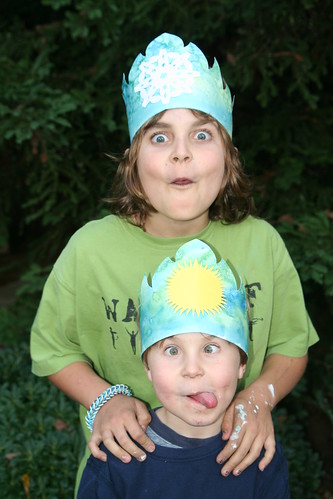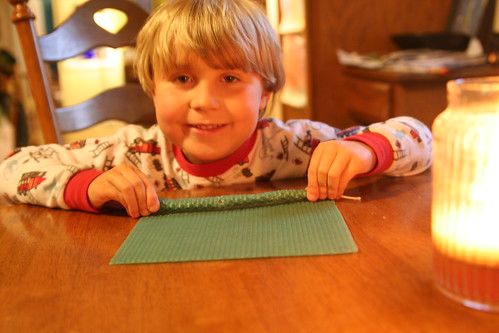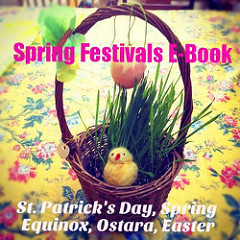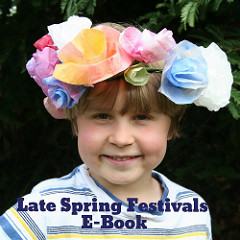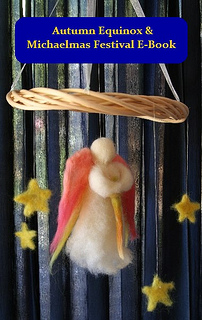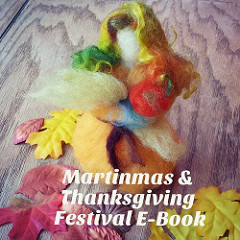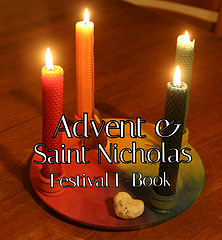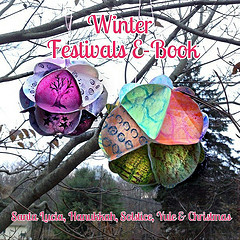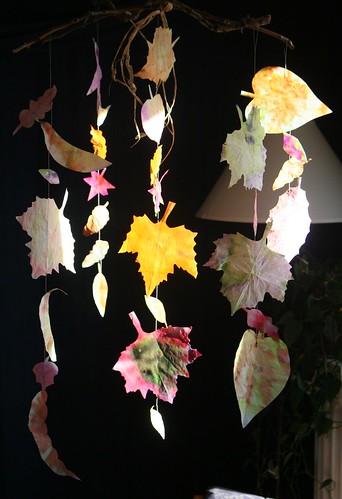
Do you ever wish you had a physical expression of all the many things your family is thankful for? Here is a simple project that can be just that. Hang this Thanksgiving Leaf Mobile over your dining room table or in your family room to decorate for the Thanksgiving holiday and remind your whole family of the bounty of blessings that you all share together.
Materials
- white circular paper coffee filters
- washable marker pens and spray bottle with water, or watercolor paints
- green floral wire
- two or three strands of raffia
- two sticks
- sewing machine or needle and thread
- scissors
- leaves to use as patterns (optional)
- pen (I used a silver pen, but any type will do)
Create Your Gratitude Leaves
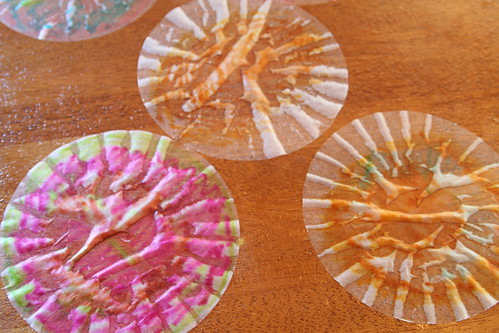
Begin by coloring your paper coffee filters with washable markers. I suggest you use mostly autumn colors. You don’t have to color anything fancy and you don’t have to worry about white spaces in between the strokes of the marker pen.
Now lay your colored coffee filters on a clean dry surface and spray them gently with water from your spray bottle. Because you are using coffee filters, the water will wick throughout the paper, spreading out your ink. The colors of the marker pens will blend together, making a beautiful wash. (Alternatively paint your coffee filters with watercolors.)

Let the filters dry. Once dry, they won’t adhere to the work surface.
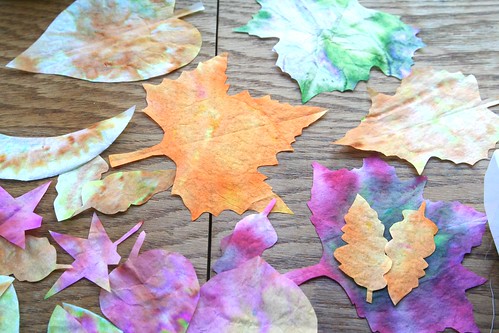
Now, fold each coffee filter circle in half and cut out a leaf shape, using real leaves as patterns, if you wish. You may want your leaves to be all the same type, varying only in size. Or, you might like to have many types of leaves. Cut out a bunch of paper leaves (I made 31).
With your family’s help, write what you all feel thankful for on the leaves. Write the name of each family member and pet on leaves. Write down the material things you enjoy, such as a house, a car, and food to eat. Also write abstract concepts such as safety, peace, harmony, education, freedom, friendship, and health. You may be surprised by what your children are grateful for, when they give you their ideas.
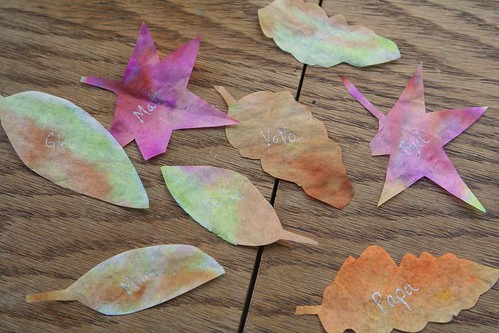
I bet that once you start counting your blessings, you’ll have no trouble creating many gratitude leaves.
Create Your Thanksgiving Leaf Mobile
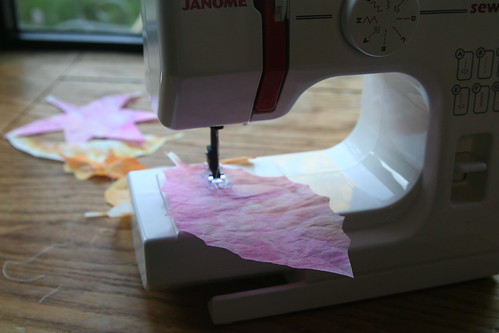
Your leaves are ready now. It’s time to sew them into a long string or banner that will hang vertically from your mobile. The simplest and fastest way to do this is by using a sewing machine set on a long stitch or very wide zigzag stitch. (You don’t want a short stitch because many needle holes very close together may actually cut your leaf into halves as you sew it.)
You want a fairly long “tail” of thread on your first leaf, as this thread will tie the whole sewn string of leaves to your mobile. While you’re sewing, allow the machine to continue sewing even off of the leaf. This results in a string of interlocked thread that provides some spacing in between your gratitude leaves and allows for additional motion in your mobile. Consider feeding the leaves into the sewing machine in a variety of orientations. If you do this, you’ll create a windswept look instead of a static look that would result in leaves pointing all the same direction.
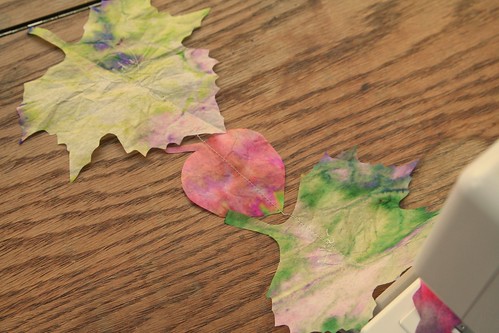
See how the leaves come off the back of the sewing machine, with some space in between them? Sew several strings of leaves. Four or five strands works very nicely. Remember not to trim your threads yet! (You can also create these leaf strands by doing a running stitch by hand with a narrow needle and thread.)

Next, construct your stick hanger. Cross your two sticks in the centers and use the floral wire to bind them together. Wrap the wire around both twigs in all directions until they feel securely bound together. This is also the time to make a wire loop that will serve as a hanger for your mobile.
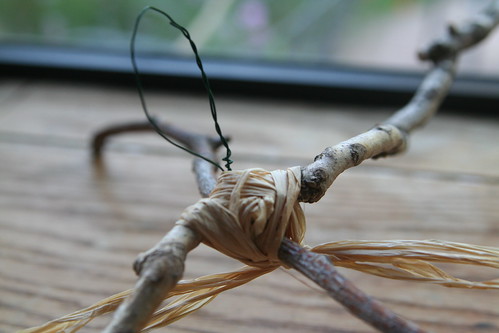
You can get fancy here if you want by adding some real or artificial fall leaves and berries to the top by poking them into the wire. Just keep in mind that the most beautiful part of your mobile should be your gratitude leaves. Whether you choose to add decorative items or not, disguise the wire by wrapping some raffia strands around the joint.
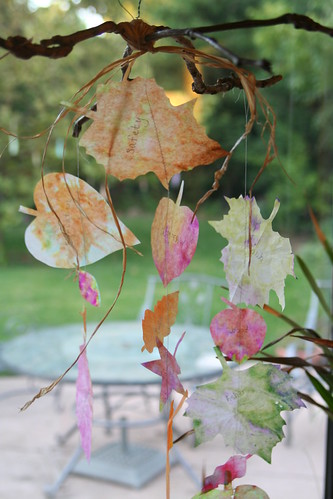
Find a place to hang your crossed sticks at about shoulder level so you can work on the mobile with both hands, or get a helper to hold it for you. Now tie your leaf strands to the ends of each stick by their extra long top threads. If you have enough, also tie a strand to the center of the mobile. Last of all, clip any extra thread from the tops and bottoms of your leaf strands.
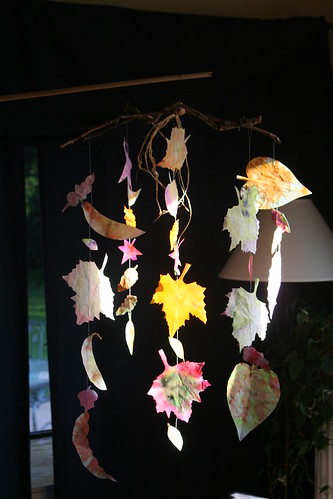
Hang your mobile somewhere prominent in your home, perhaps where some airflow may move it or where autumn sunshine might make it shine. When you look at it, you’ll see how very blessed and grateful you and your loved ones are. Blessed be!
